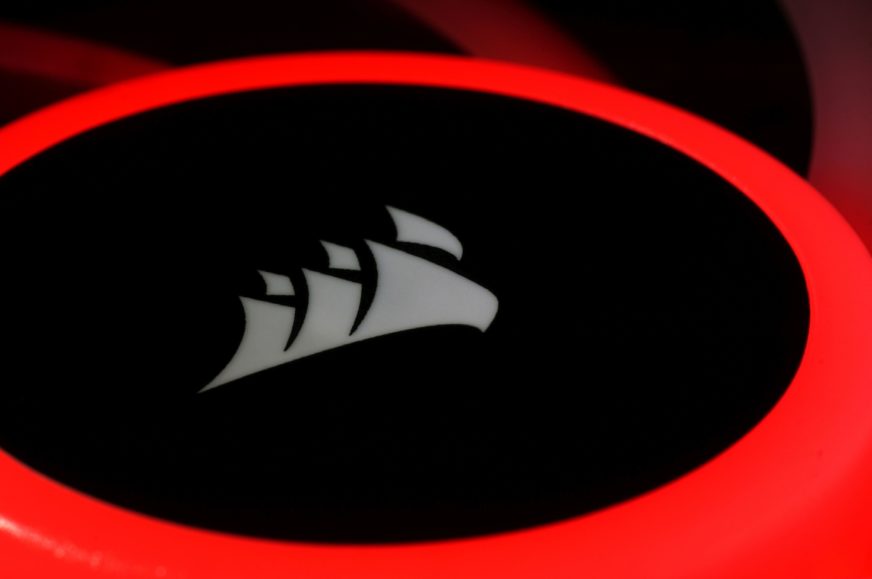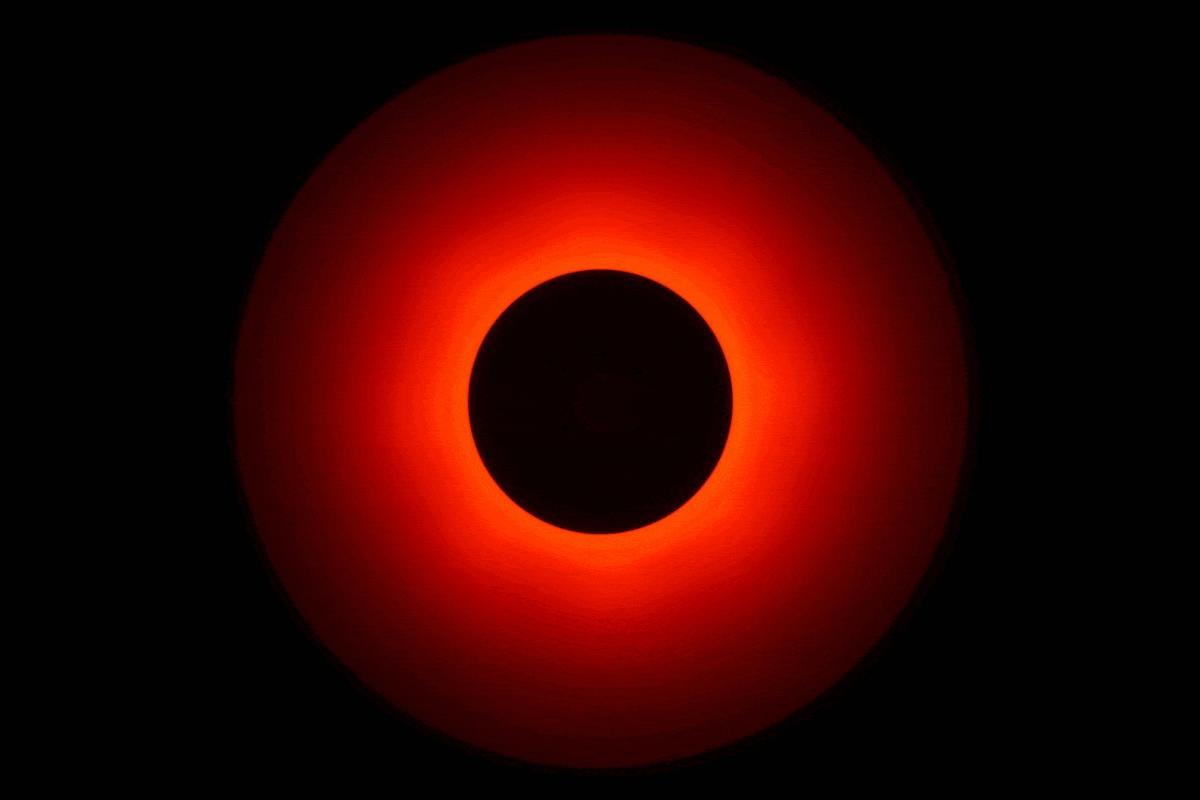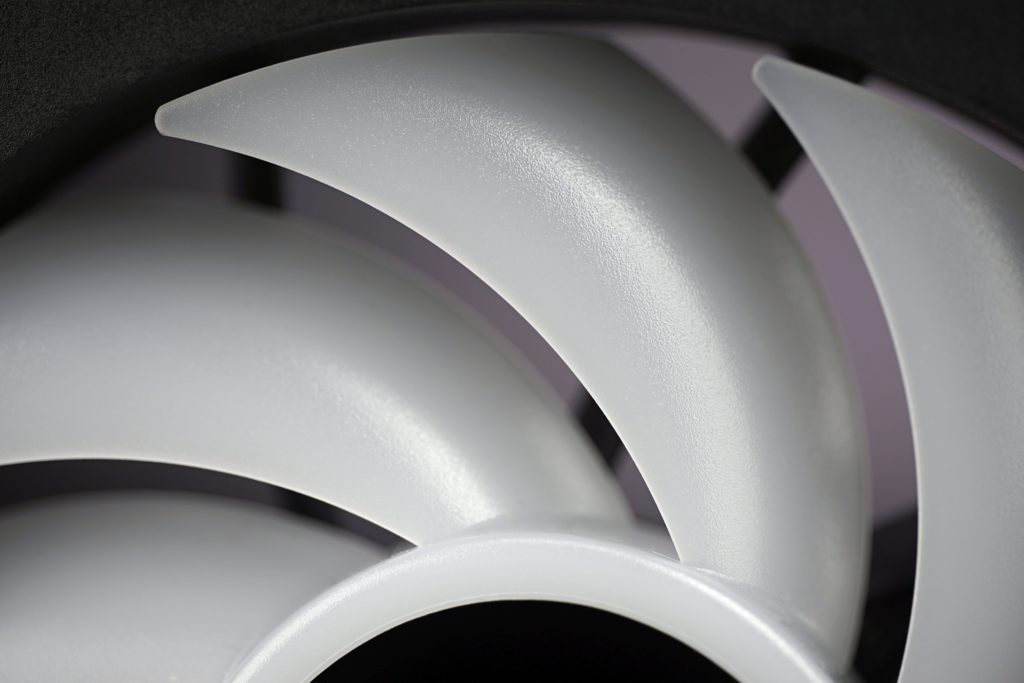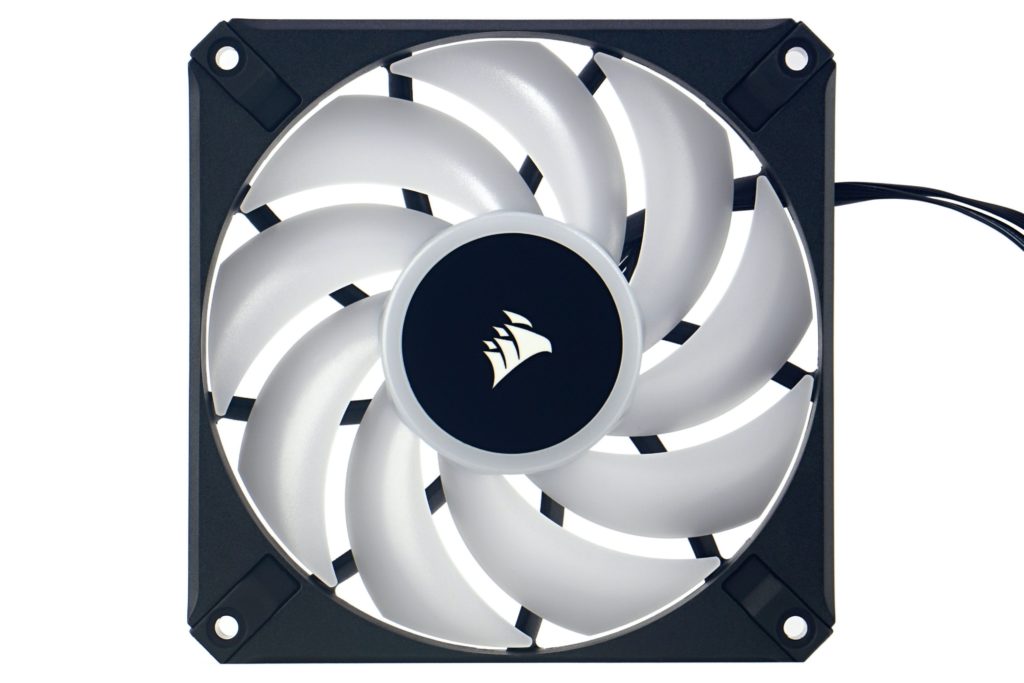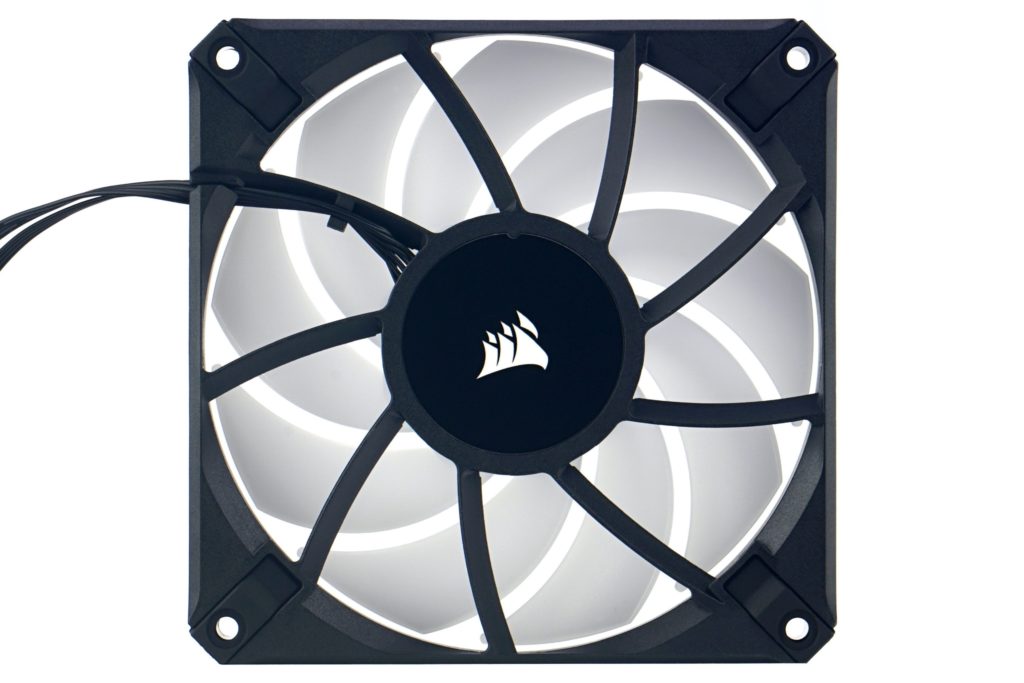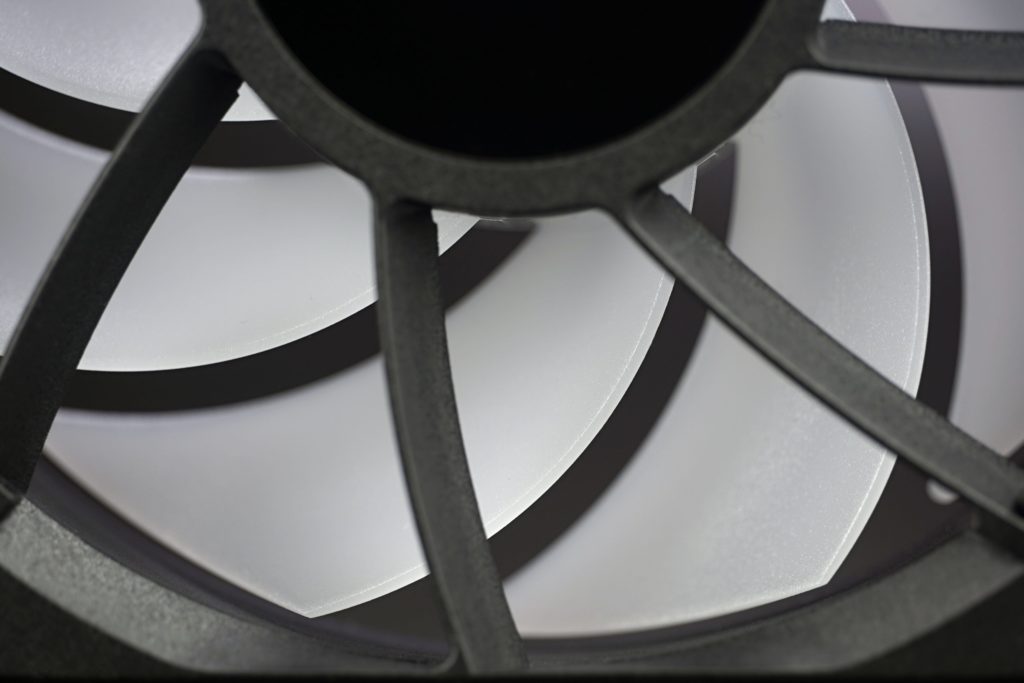Corsair AF120 RGB Elite in detail
We consider the Corsair AF120 Elite to be one of the most pleasant surprises of last year when it comes to fans. There wasn’t much to complain about with the simple but effective design… Someone may have missed the lighting though. The “RGB” model added this after some time. However, this is not the only change, there are more and these include, for example, higher speeds. However, the wide range (with low minimum speeds) remains.
The Corsair AF120 RGB Elite fans are based in part on the AF120 Elite (without ARGB LEDs), which we paid extra attention to in our tests. This by comparing tests of the white variant with the black one, where the different results are influenced by different material compositions each with slightly different blade stiffness. The latter (blade/rotor stiffness) comes into play now as well, and differs significantly from the “ordinary” (unlighted variants).
To make the fan as bright as possible and achieve high brightness ovtabler a large area, the AF120 RGB Elite is the type of fan with full rotor lighting. A “milky” material structure is used with the LED layout traditionally on the PCB at the blade base. Towards the tips of the blades, the lighting intensity fades a bit as with other fans.
The blade geometry is very similar to that of the unlighted variants of the AF120 Elite. It is a shape with more aggressively curved leading edges that has become very popular for its high efficiency, or high airflow per unit of noise. Surface-wise, if you focus on the spacing between the blades or between the blades and the frame tunnel, it’s a carbon copy of the AF120 Elite.
The RGB variant has thinner blades in thicker places (tips) by up to about half a millimetre, but with 1.80–2.50 mm they are above standard thickness for fans, they are no “eggshells”. Besides the smaller thickness, the stiffness of the blades (compared to the AF120 Elite) is naturally reduced by the material itself, probably some kind of polycarbonate. The higher flexibility is obvious.
Although Corsair didn’t go into too much detail when it comes to minor tweaks (to speed up intake air streams or to reduce tonal peaks), the top level of build quality has to be highlighted. The injection moulds are obviously precise and you won’t find the slightest imperfections on the edges of anything (be it rotor or frame). Then, as a test of the correctness of the overall precision work (i.e. including centering when mounting the rotor), the extremely low vibrations even at high speeds are testimony.
Higher speeds (up to 2100 rpm) are also one of the points where these fans differ from the non-illuminated variants. The AF120 RGB Elite is 300 rpm faster. This is supposed to officially represent an 11% increase in airflow, which scales quite well with reality.
Hand in hand with the higher speeds, a more powerful motor is also used, but the bearings are still fluid. The mean time between failures is not specified by Corsair. The cables to connect the motor and ARGB LEDs are long, up to 60 cm. Thus, increased consideration is also given to owners of large cases, or users who tend to zigzag a lot when managing the cabling.
Keep in mind, however, that the ARGB LED has its own 4-pin connectors, for which you’ll need an additional adapter (usually not included) or a Lighting Node Core hub (the latter is already supplied by Corsair, but only in a triple-pack). Of course, as long as you have this sorted out, you have the really detailed iCUE app environment. This is significantly more feature-rich than the universal interfaces of motherboard manufacturers.
Warning: Do not attempt to connect the 4-pin iCUE connector to the 4-pin header of older boards. The latter is 12-volt as opposed to the Corsair’s 5-volt power supply. The similar key can be tricky here, but because the Corsair iCUE connector’s pins are significantly larger (and with a different cross-sectional shape – square instead of a circle) than the RGB header’s 12V pins, there shouldn’t be an electrical connection (and irreversible damage to the LEDs). It doesn’t hold together and falls out.
- Contents
- Corsair AF120 RGB Elite in detail
- Overview of manufacturer specifications
- Basis of the methodology, the wind tunnel
- Mounting and vibration measurement
- Initial warm-up and speed recording
- Base 6 equal noise levels…
- ... and sound color (frequency characteristic)
- Static pressure measurement…
- … and airflow
- Everything changes with obstacles
- How we measure power draw and motor power
- Measuring the intensity (and power draw) of lighting
- Results: Speed
- Results: Airlow w/o obstacles
- Results: Airflow through a nylon filter
- Results: Airflow through a plastic filter
- Results: Airflow through a hexagonal grille
- Results: Airflow through a thinner radiator
- Results: Airflow through a thicker radiator
- Results: Static pressure w/o obstacles
- Results: Static pressure through a nylon filter
- Results: Static pressure through a plastic filter
- Results: Static pressure through a hexagonal grille
- Results: Static pressure through a thinner radiator
- Results: Static pressure through a thicker radiator
- Results: Static pressure, efficiency by orientation
- Reality vs. specifications
- Results: Frequency response of sound w/o obstacles
- Results: Frequency response of sound with a dust filter
- Results: Frequency response of sound with a hexagonal grill
- Results: Frequency response of sound with a radiator
- Results: Vibration, in total (3D vector length)
- Results: Vibration, X-axis
- Results: Vibration, Y-axis
- Results: Vibration, Z-axis
- Results: Power draw (and motor power)
- Results: Cooling performance per watt, airflow
- Results: Cooling performance per watt, static pressure
- Airflow per euro
- Static pressure per euro
- Results: Lighting – LED luminance and power draw
- Results: LED to motor power draw ratio
- Evaluation





